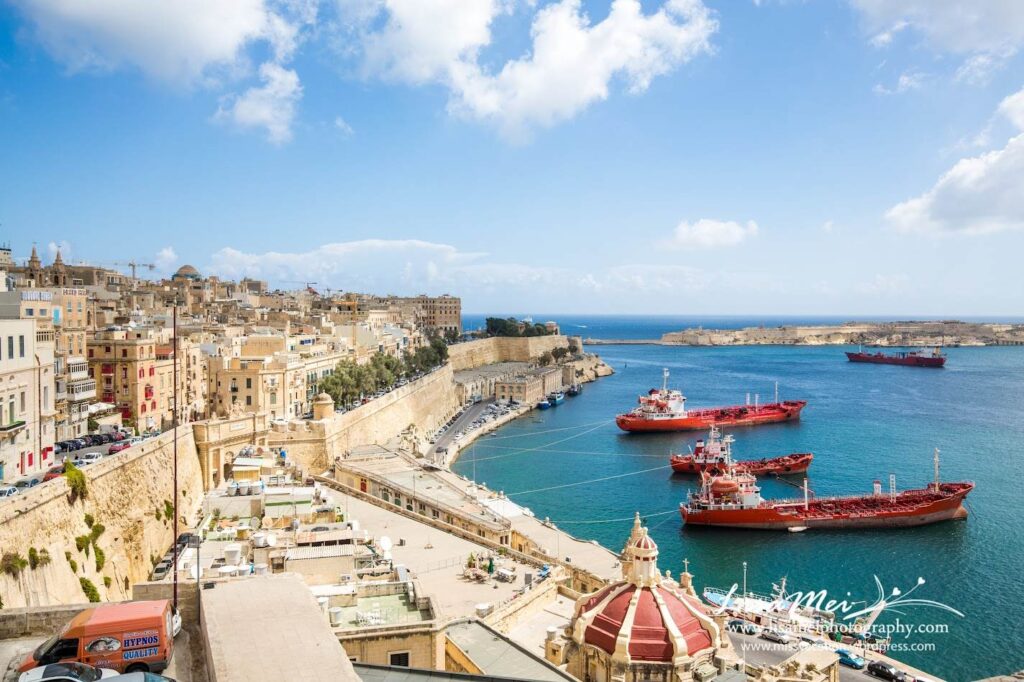Valletta, Malta – Travel Tips
Category
Categories
Popular Articles

# Overview of Valletta, Malta
Valletta, the capital city of Malta, is a glorious fortified city that commands a place on UNESCO’s World Heritage list. It’s a uniquely preserved 16th-century city, known for its splendid baroque architecture, a myriad of museums, and impressive fortifications. What makes it worth visiting is its compact size packed with centuries of history, rich culture, vibrant nightlife, beautiful harbors, and decent year-round weather.
# Best Time to Visit
Valletta makes for a great destination all year round. However, the best time to visit would be during spring (March-May) and fall (September-November) where the weather is pleasant, and the crowds are less. If your visit aligns with Easter (March/April), you’ll be treated to elaborate processions and festivities. On the other hand, February brings the much-loved Malta Carnival with parades and parties.
# Climate & What to Pack
Malta boasts a Mediterranean climate, ensuring mild winters and hot summers. Winter temperatures fall between 10-15°C, climbing to a balmy 25-30°C during the summer. Most of your suitcase space should be packed with light, breathable clothes, hats, and sunscreen for the summer months, while a light jacket is perfect for cooler winter evenings. Don’t forget to pack a quality pair of shoes for traversing the city’s cobblestone streets!
# Getting There
Malta International Airport (MLA) is your gateway to Malta, located only 10 km from Valletta. A multitude of international flights connect Malta to the world. From the airport, you can take a taxi, public bus, or shuttle service to reach Valletta. For most countries, a visa is not required for visits up to 90 days.
# Getting Around Locally
Valletta isn’t a large city, and most attractions can be easily reached on foot. However, if you fancy a slightly longer journey, opt for the public bus system. Taxis and rideshares are readily available. Cycling and hiring a scooter can be great fun but bear in mind that Malta’s roads can be a little rough.
# Safety Tips
Valletta is widely considered a safe destination. However, like anywhere else, basic precautions should be taken. Avoid poorly lit areas late at night, and be wary of overly persistent street vendors. Try to follow local customs and practices to show respect to your hosts.
# Top Things to Do & See
Essential spots not to miss include St. John’s Co-Cathedral, Grand Master’s Palace, and the splendid views from Upper Barrakka Gardens. For a unique experience, indulge in a traditional harbor cruise or discover hidden charm in the old fortified city Mdina. Malta has a rich history with the Knights of St. John, so the Hospitaller’s history tour is a great choice.
# Where to Stay
Luxury seekers will be well-catered for at The Phoenicia Malta. Mid-range travelers might prefer the well-regarded boutique hotel, SU29. Budget travelers can also find several well-priced accommodations and hostels such as Valletta Merisi Suites.
# Food & Local Cuisine
Prepare your taste buds for an adventure! The must-try dishes include Pastizzi (filo pastry pies), rabbit stew, and the sumptuous Maltese platter. “Il-Forn” offers a sublime local dining experience. For a lighter bite, Maltese bakeries and pastizzerias scattered around the city are good options.
# Cultural & Practical Tips
The official languages are Maltese and English. The local currency is the Euro. Tipping is appreciated and generally 10% of your bill. Malta uses Type G outlets, and the standard voltage is 230 V. Wi-Fi access is common and widely available.
# Sustainable or Responsible Travel Tips
Support local businesses, respect the city’s heritage sites, and try to use public transport or go on foot to reduce your carbon footprint. Recycle as much as possible – many hotels and public places have recycling bins available.
Last but not least, come with an open mind, respect the local customs, and take time to soak in the rich Maltese history and culture on offer at Valletta. You’re sure to have a memorable time.










